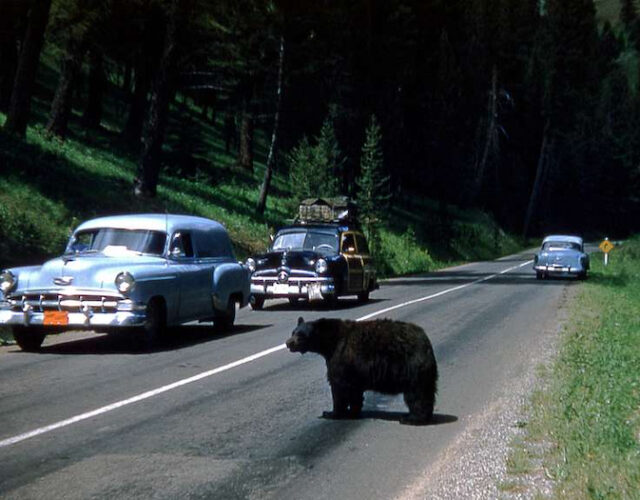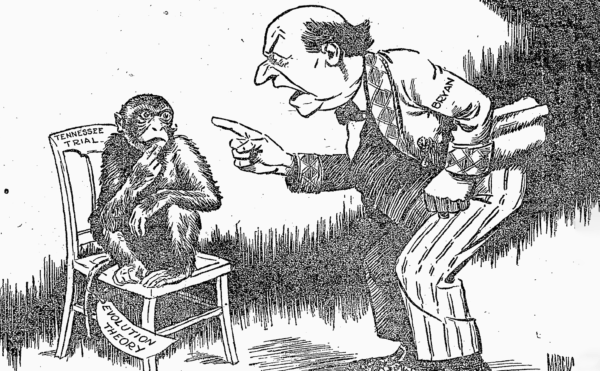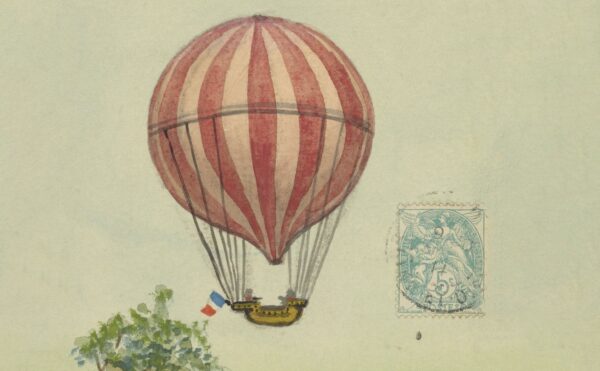In the 1920s a biologist named Dayton Stoner took a roadtrip and landed on his next big research question: what exactly were the consequences of the automobile for wildlife? The answer was staggering. One hundred years later the problem of roadkill is exponentially worse. But at least we now know how to make things better.
About The Disappearing Spoon
The Science History Institute has teamed up with New York Times best-selling author Sam Kean to bring a second history of science podcast to our listeners. The Disappearing Spoon tells little-known stories from our scientific past—from the shocking way the smallpox vaccine was transported around the world to why we don’t have a birth control pill for men. These topsy-turvy science tales, some of which have never made it into history books, are surprisingly powerful and insightful.
Credits
Host: Sam Kean
Senior Producer: Mariel Carr
Producer: Rigoberto Hernandez
Associate Producer: Padmini Raghunath
Audio Engineer: Jonathan Pfeffer
Transcript
Dayton Stoner was so looking forward to his summer road trip. It was a beautiful day in June 1924. He was a biologist, mostly a bug and bird guy, and he was traveling from Iowa City in central Iowa to Lake Okoboji up near the Minnesota border, where he planned to spend a month at a research institute. His ornithologist wife and trusted assistant Lillian was nestled into the front seat next to him, and they no doubt had a scrumptious picnic packed for lunch. There were no car radios back then, so all they could do was enjoy the scenery on the open road ahead of them.
Unfortunately <JARRING-BIRD> a jarring note soon sounded. Within a minute of them leaving town, they spotted a dead animal beside the road. Stoner never recorded what it was, but possibly a redheaded woodpecker—a spunky black-and-white bird with a startling scarlet hood. As a biologist, seeing any dead animal saddened Stoner. Still, it was his vacation, and he didn’t let this drag him down.
Except—then it happened again. This time, it was maybe a squirrel or a rabbit with a tire mark on it—squashed by the side of the road. Stoner no doubt backed off a bit on the gas pedal, then patted Lillian’s hand and smiled. Sad, but unavoidable.
Except, then it happened again. And again, and again. Every mile, it seemed, he spotted some new dead animal on the road—all of them flattened by automobiles. Which was awkward, given that Stoner was driving a car himself. And at some point, he could no longer bury his discomfort. How many animals killed by cars was he going to see?
A lot. And keep in mind, this was just one back road in the middle of Iowa. Stoner started running a few numbers in his head, thinking about the vast United States, with millions of miles of roads. When he started extrapolating, the numbers got pretty ugly pretty quickly.
Still, Stoner was a scientist. He didn’t want guesses and extrapolation, he wanted data. So he enlisted Lillian’s help, asking her to keep track of both the number of dead animals and the species. And just like that, their summer road trip turned into a scientific venture.
The question was: what exactly were the consequences of the automobile for wildlife? And the answer—not just for Iowa, but for the world—would prove to be every bit as staggering as Dayton Stoner feared.
Dayton Stoner had a jolly, jowly face, with a black mustache and a receding hairline. He was born in Iowa City in 1883 and for decades he basically never left. He graduated from Iowa City High; attended the University of Iowa for undergrad and graduate school; then started working in a museum there. He married Lillian in 1912.
Stoner’s first big research excursion, in 1918, took him to Barbados and Antigua in the Caribbean. Collecting trips like this were a rite of passage for biologists then, their own version of Darwin’s voyage on The Beagle. Stoner reportedly played the mandolin on jaunts between islands, an instrument he’d somehow picked up in Iowa.
Stoner mostly studied stinkbugs on the trip, with Lillian by his side every step of the way. They spent most days drenched—either rained on during sudden storms, or dripping with sweat in the relentless humidity. Sometimes both.
They nevertheless loved the trip. Although Stoner did run into some trouble one day. It’s not clear why, but locals suddenly decided that the white man poking around the bush … was a spy. And a German spy to boot. That was not a welcome accusation on a British colony during World War One.
Children started following him around— actually trying to stone him, pelting him with rocks. <ROCKS> Later, a mob of adults showed up with rope to seize and interrogate him. He managed to talk them down, though, and convince them he was a harmless entomologist. After that, they left him alone.
Despite this misadventure, Stoner took a trip to Fiji and New Zealand in 1922, and all in all, he got several worthwhile papers out of his junkets. But despite all the exotic places he traveled, the most lasting research he ever did started a few miles outside of Iowa City, on the road trip to the lake in 1924.
Given his trained eye, Stoner could recognize most of the roadkill by sight without slowing down. Snakes, skunks, cuckoos, robins, weasels, meadowlarks, cats. But every so often some animal was so squashed he had to get out and inspect it, just to tell what this smear of guts was.
Overall, the 316-mile trip took two days in June. And he re-traced the same basic course back in July, with Lillian tallying the whole time. The final count floored him. In toughly 600 miles, they spotted 225 dead vertebrates, from 29 different species. Fifty-three were the gorgeous redheaded woodpeckers, who fed on insects on the roadside, and were sluggish to take flight.
And again, this was just one road, in one not particularly animal-rich stretch of Iowa. What about elsewhere in the country?
Well, Stoner later took more road trips to Florida and New York, and gathered more data. And it became clear that Iowa was not unusual. In some states, he found a new dead mammal every ten miles, and multitudes of birds, reptiles, and amphibians on top of that. It was carnage.
Now, roadkill itself was not a new phenomenon. <BUGGY> Even back in the days of horses and buggies, animals like turtles <SOFT-CRUNCH> would sometimes get flattened. But as Stoner realized—and other biologists on their own road trips quickly confirmed—cars were a whole new order of menace.
Carriages could run down sluggish turtles, sure. But cars were nailing birds and bats, foxes and rabbits, toads and turkeys—quicker animals. Wetlands and marshes especially suffered—which then meant things just got worse for poor turtles. One survey near a river in 1934 found 18 dead turtles in just 60 feet of road.
Things got especially bad when the United States made a concerted effort to improve its roads starting in the 1930s. Before this, the U.S. had mostly dirt byways. But federal and state agencies began turning dirt roads into gravel ones, and pave gravel one with smooth blacktop.
The goal of this work was noble: to connect rural America, and help farmers get produce to markets. Honestly, too, in an increasingly urbanized country, rural roads were one of the few places were cityfolk still encountered wild animals.
But better roads also created awful feedback loops. On Stoner’s road trip through Iowa, he never drove more than 25 miles per hour. And unless you didn’t value your Model T—or your back—most people then never topped 40.
But investment in better roads, however well-intentioned, meant faster speed limits. Forty crept up to 50–then 60–then higher. And animals that might have escaped collisions before now got clobbered. With the quick expansion of the interstate highway system in the 1960s, cars overtook hunting as the biggest human killers of wildlife in the country.
Plus, when animals get hit, scavengers come by to feast on the easy pickings. In some ways it’s a bonanza for them. During my research I came across an editorial cartoon of two vultures praying over a meal, giving thanks for their bounty to—Henry Ford. Ha ha. But because scavengers gravitate toward roads to pick at carcasses, they themselves get into danger. So they end up getting hit more often. Which only attracts more scavengers—who themselves get hit, and so on.
Things really got out of control when people started careening into deer. Now, don’t get me wrong. It’s sad to strike a skunk or woodpecker. And you might need to replace your windshield. But you’re probably walking away from that collision.
With deer, it’s a different story. As late as 1939, motorists across the United States killed just a few deer a day on average. But as roads, good roads, made inroads into more rural areas … and as cars got explosively faster—so faster deer could no longer dart to the side … then deer-car collisions started to get more deadly.
Deer were attracted to highway for one big reason. As part of general safety measures, engineers started adding medians and so-called verges to highways—strips of grass on the side and in the middle. And that soft, tender grass was ambrosia for deer. They started actively seeking out roadways to feast on it. But, animals come to highways, and collisions follow like night on day.
Engineers tried to fix the problem. They started planting grasses near highways that deer didn’t find as tasty, and started sowing grasses that they did find tasty far afield from highways, to keep the deer away. They also stopped salting roads during the icy winters, since the deer sometimes came to lick the salt for nutrients. In desperation, they also sometimes fenced roads off for miles, to block the deer physically.
None of it worked. The original, tasty grasses were tenacious and kept growing. The deer also learned to walk around the fences or squeeze through gaps—or even, seriously, limbo under.
And deer weren’t the biggest problem. Other animals almost got pushed over the cliff to extinction.
Consider the Florida panther—a tawny, majestic beast. Overhunting and rapacious development in southern Florida had whittled its population down to about sixty in wild. And cars seemed poised to finish the job. . In 2021, motorists killed at least 21 panthers, and 8 more in the first two months of 2022—an estimated one-eighth to one-quarter of their population in the wild.
What made Florida panthers vulnerable was their reproductive style. There’s a law in biology called ‘r’ versus ‘k’. R species are creatures like rodents or frogs. They have children real young, and have lots and lots them. Then, they let them fend for themselves. The theory is that that, by having so many children, you ensure that at least some will survive.
Meanwhile, K species include whales, elephants, and, well, us—people. We have children late, don’t have many of them, and invest heavily in those we do. R species favor quantity, K species quality.
Panthers are a K species, and K species generally suffer worse from roadkill, because every death is proportionately worse. They don’t pump out children. And suddenly, because of cars—an evolutionarily unforeseen threat—the million-year-old quality-versus-quality calculus fails.
Still, even if K species suffer more proportionately, r species suffer the most deaths. In fact, go ahead and guess how many vertebrates overall die every day from cars in the United States. Is it … a thousand? Fifty thousand? A hundred thousand?
You’re still an order of magnitude short. An estimated one million vertebrates end up as roadkill every single day here. That’s one every 12 seconds.
And sadly, not all of these are accidents. In a scientific study a few years ago, scientists put plastic snakes and frogs on paved highways to see how often people hit them. They also put down fast-food cups, as a comparison.
Now, I have to admit, when I’m driving and I see a fast-food cup, I serve every time. It makes such a satisfying crunch under the wheel. <PAPER-CRUNCH>
But, I would never go after animals.
Alas, people do. The study found that drivers went after the snakes especially far more than chance would allow, despite having no reason to think they were fake. At least some of the million animals that die every day here are deliberate faunicides.
North America isn’t alone, either. Wherever there are roads, there are deaths, and much like the Florida panther, there are dozens of threatened species elsewhere as well. Even huge, seemingly immoveable beasts like yaks and tigers and elephants get struck down. And this carnage doesn’t even include insects—a few hundred trillion of which—trillion, with a t—get splatted onto grilles and windshields every year.
Probably the most dangerous country for roadkill is Brazil. Both the government and powerful business interests there want to build new roads and pave existing ones in the Amazon.
The worst-hit animal has been the goofily chimeric giant anteater—with its shaggy Snuffleupagus snout but razor-sharp claws, its push-broom tail but serpentine tongue. Anteaters are adventurous enough to blunder onto roads but not quite agile enough to dodge cars. Their population has been estimated around 5,000—but with new road incursions, roughly 300 are killed every year. That’s not favorable math. I fear that in few decades, we’ll be talking about them in the past tense.
Anteaters are hardly alone, though. Other clobbered species in Brazil include—raccoons, caimans, foxes, raptors. In fact, if the United States figure of one million dead animals a day horrified you, roadkill in Brazil is 10 percent worse—one-point-one million per day, or 400 million each year.
So, is there anything we can do about the carnage of roadkill? Yes. There’s the obvious solution of not building roads, especially not in crucial animal habitats. But … that’s quite unlikely to happen, especially in the developing world, where roads often mean jobs in logging and mining for people with few other prospects.
Crazily, in some cases, animals have actually evolved to suffer fewer accidents. One 30-year study in Nebraska found that cliff swallows have developed wings that are 4 percent shorter. This helps them take off from the ground faster and also change directions more deftly in midair, all the better to avoid 18-wheelers. <WHOOSH>
But, waiting for animals to evolve isn’t the best solution. Roads can and should get better. The most effective solution is to incorporate under- and overpasses to accommodate animals. These are tunnels beneath, or grassy bridges over, highways, to allow deer and skunks and anteaters to traipse harmlessly across. It’s so easy.
Sadly, though, penny-pinching government agencies often eliminate under/over-passes from their plans, even though they’ve been wildly successfully when employed. In Banff National Park in Canada, these passes have eliminated 80 percent of the roadkill. That’s 80 percent fewer animals dying.
It’s been nearly a century since Dayton Stoner’s vacation excursion to Lake Okoboji. He…just wanted to call people’s attention to an ugly and growing problem. After dying in 1944, of lung cancer, he could not have foreseen just how big a problem roadkill would become—nor the sheer scale of death today.
But we know how to make things better. We can build under- and overpasses. Or build roads that skirt or avoid migratory areas or vital habitats. We can also think twice about building new roads, period.
As mentioned above, in our increasingly urbanized world, rural roads are one of the few places where people regularly see wild animals. It sure would be nice, though, if those wild animals were still alive.




